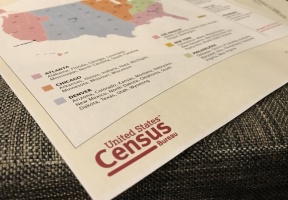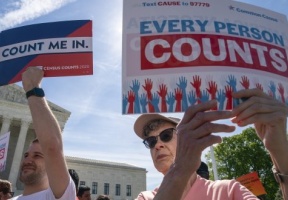By: Ashmar Mandou
Why is the census important?
 The decennial census is the most inclusive civic activity in the country, covering every person in every household. The U.S. Constitution requires an accurate count of the nation’s population every ten years. Census results are used to allocate seats and draw district lines for the U.S. House of Representatives, state legislatures, and local boards; to target more than $800 billion annually in federal assistance to states, localities, and families; and to guide community decision-making affecting schools, housing, health care services, business investment, and much more.
The decennial census is the most inclusive civic activity in the country, covering every person in every household. The U.S. Constitution requires an accurate count of the nation’s population every ten years. Census results are used to allocate seats and draw district lines for the U.S. House of Representatives, state legislatures, and local boards; to target more than $800 billion annually in federal assistance to states, localities, and families; and to guide community decision-making affecting schools, housing, health care services, business investment, and much more.
Latinx households are at risk of being undercounted.
Latinxs have been undercounted for decades, disadvantaging their families, communities, and neighborhoods. Latinx children in particular are among the most undercounted populations in the United States. Today, there are 56.5 million Latinxs living in the United States, and roughly one in three live in hard-to-count census tracts.
What are the consequences of undercounting the Latinx community?
When the Latinx community is undercounted, political boundaries may not accurately reflect reality. Undercounting Latinxs in the 2020 Census could impact how federal funding is allocated to states and localities. Many programs that impact the Latino community are based in whole or in part on census-derived data, including:
Head Start Program – $8.3 billion. This program provides grants to local public and private nonprofit and for-profit agencies to provide child development services to low-income children and families, with a special focus on helping preschoolers develop the early reading and math skills they need to be successful in school. In the 2015-16 school year, Hispanic children comprised 37 percent (about 340,000) of participants in the Head Start Program.
Child Care and Development Fund – $2.9 billion. This fund assists low-income families, families receiving temporary public assistance, and those transitioning from public assistance in obtaining child care so they can work or attend training and education.43 Latino children made up about 21 percent (294,000) of the children who received care through the program in 2014.











